In recent years, the virtual production industry has been adopting cutting-edge technologies to enhance the special effects of movies and television shows. 3D scanning and printing is one such technology that has completely changed the special effects makeup industry. Artists can use this technology to generate precise and in-depth models of performers’ bodies and faces.
Peter Luong, a 3D artist from California, is using this technology to help create special effects makeup in movies. Read on to see his experience and results.
Table of Contents
Traditional special effects makeup production method
Traditionally, special effects makeup production involved the use of life-casting, a process in which a mold is taken of an actor’s face or body. This process can be time-consuming and uncomfortable for the actor, as it often involves the application of plaster or other materials to the face and body. Also, it can be prone to inaccuracies and can result in a less-than-perfect final product.
The Great Benefits that EinScan Pro HD Brings
Peter has found that the use of 3D scanning and printing technology can greatly simplify the special effects makeup production process. He has been using the EinScan Pro HD Multifunctional Handheld 3D Scanner, which is an efficient scanner that is ideal for creating digital twins for special effects makeup.
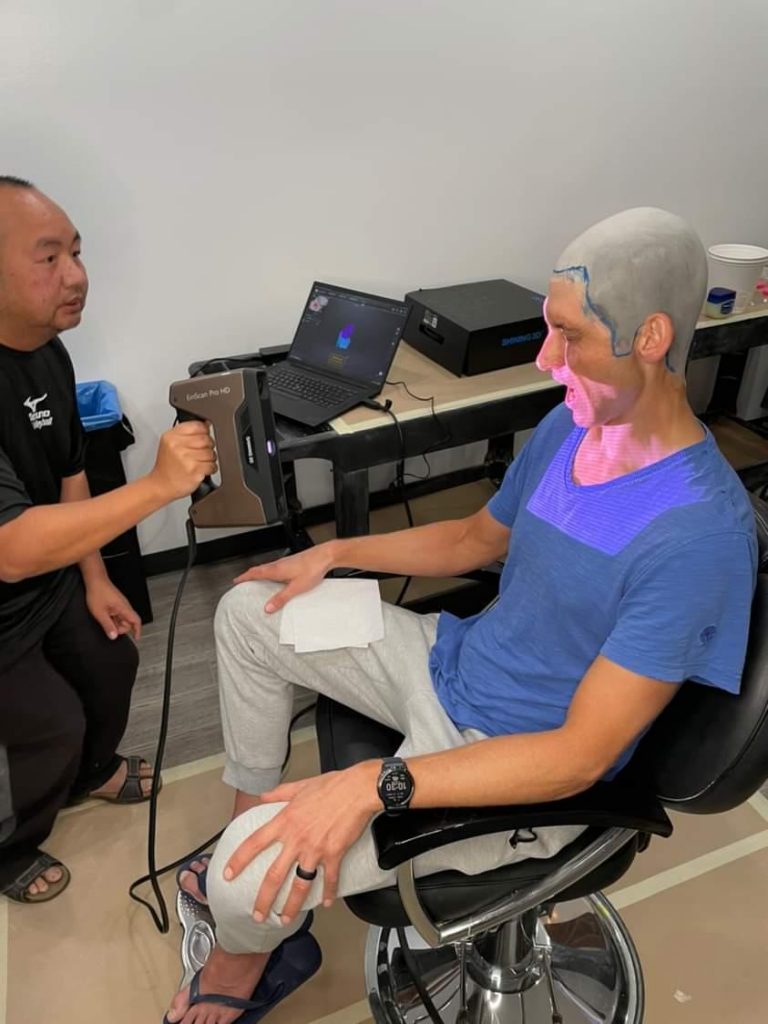
Peter is using EinScan Pro HD for face scans of models
Accurate and fine detailed 3D scans
The EinScan Pro HD is able to capture highly accurate 3D scans. In handheld HD scan mode, it scans with an accuracy of up to 0.045mm, ensuring that the resulting digital model is an accurate representation of the subject and showing fine details.
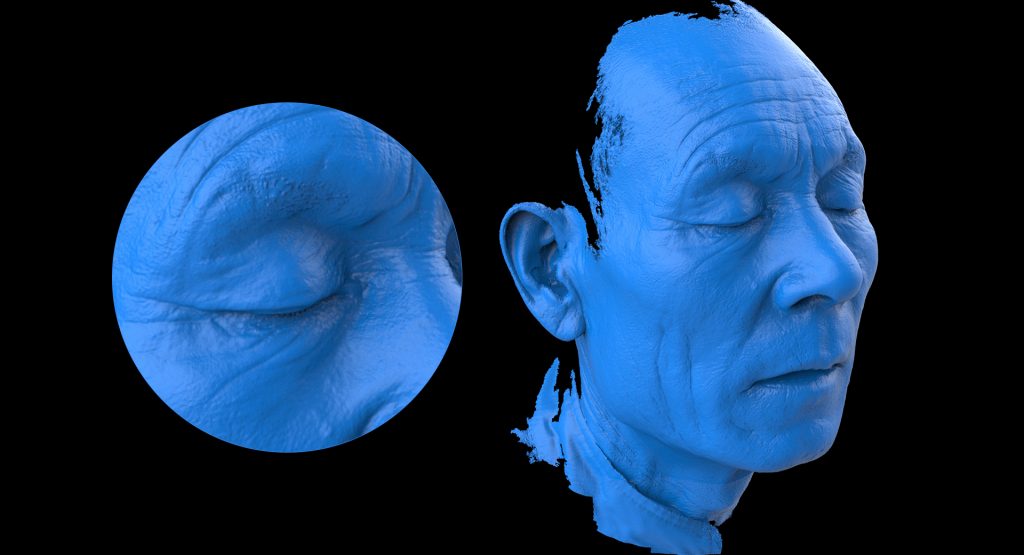
Face scanning-clearly showing details such as wrinkles
Rapid scan mode leads to time-saving
What’s more, EinScan Pro HD has rapid scan mode, so the actor can simply stand still while the scanner captures their face or body in a matter of minutes.
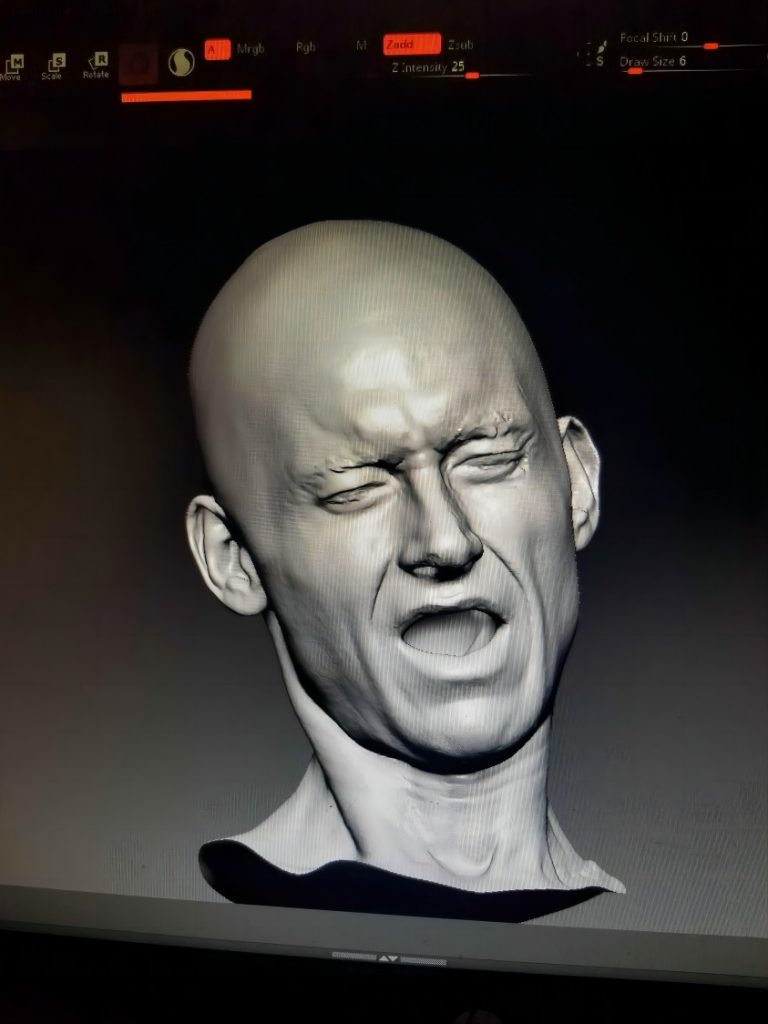
3D data presented in ZBrush-a digital sculpting tool that combines 3D/2.5D modeling, texturing and painting
The use of 3D scanning technology not only saves time and materials such as plaster, but also results in a more accurate and detailed final product.
3D modeling and printing easily
Once the digital twin is created using the 3D scanner, the 3D model can be refined and manipulated using 3D modeling software. The model can be modified to include the necessary special effects makeup before the file is sent to a 3D printer. The 3D printed model can also be easily replicated, making it ideal for creating multiple copies of a specific special effect makeup.
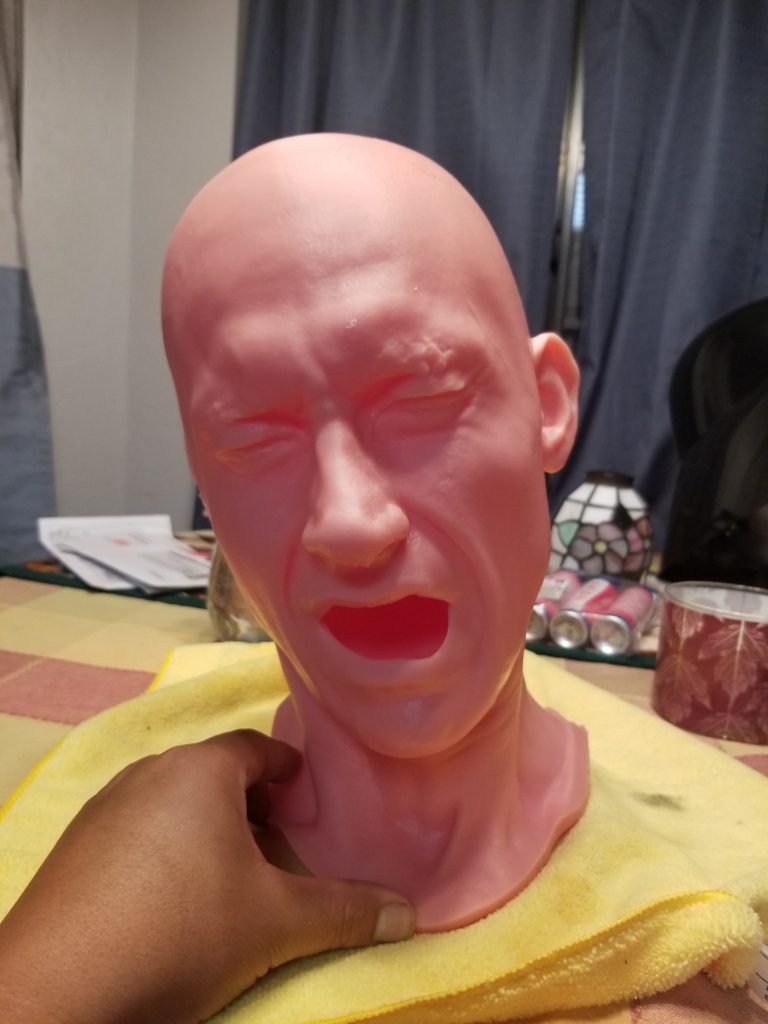
3D printed model by a resin printer
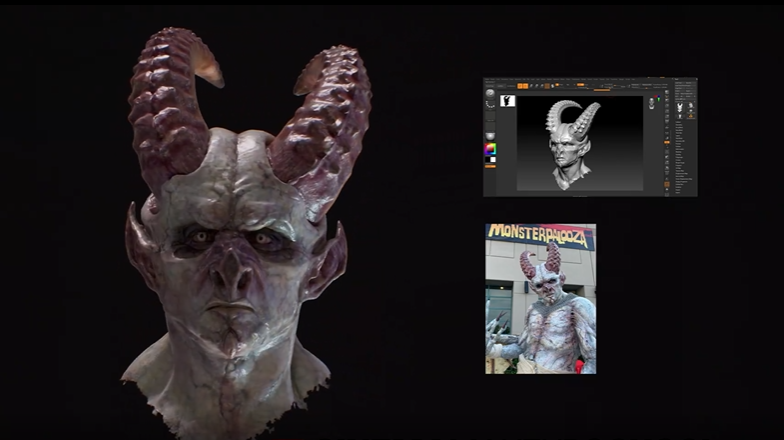
A design work and final display that Peter did
3D scanning and 3D printing provide artists with a completely new workflow that is much better than the previous. This technology allows for greater flexibility and precision in the special effects makeup production process and allows for the creation of custom designs that are difficult or impossible to achieve using traditional production methods.





